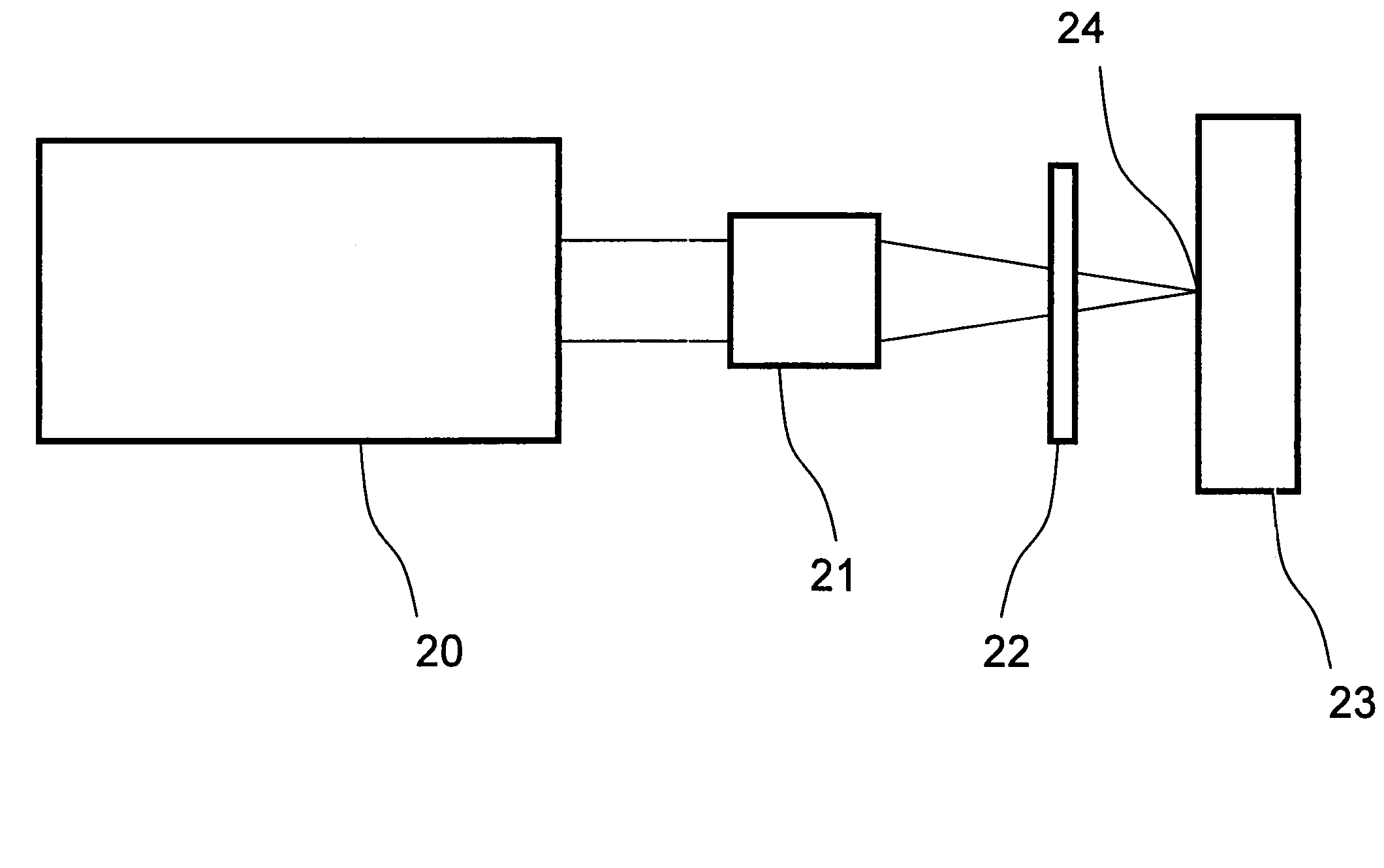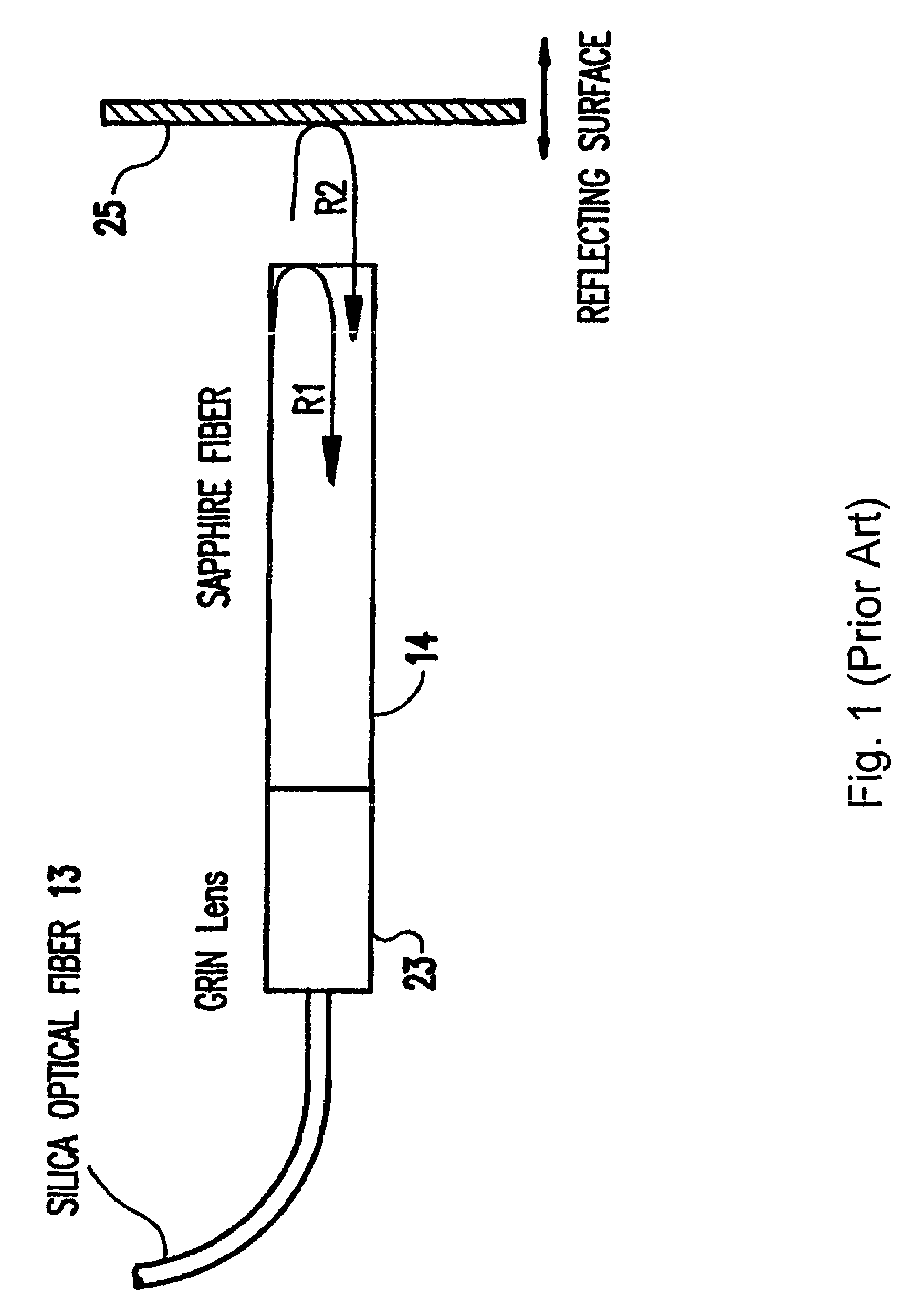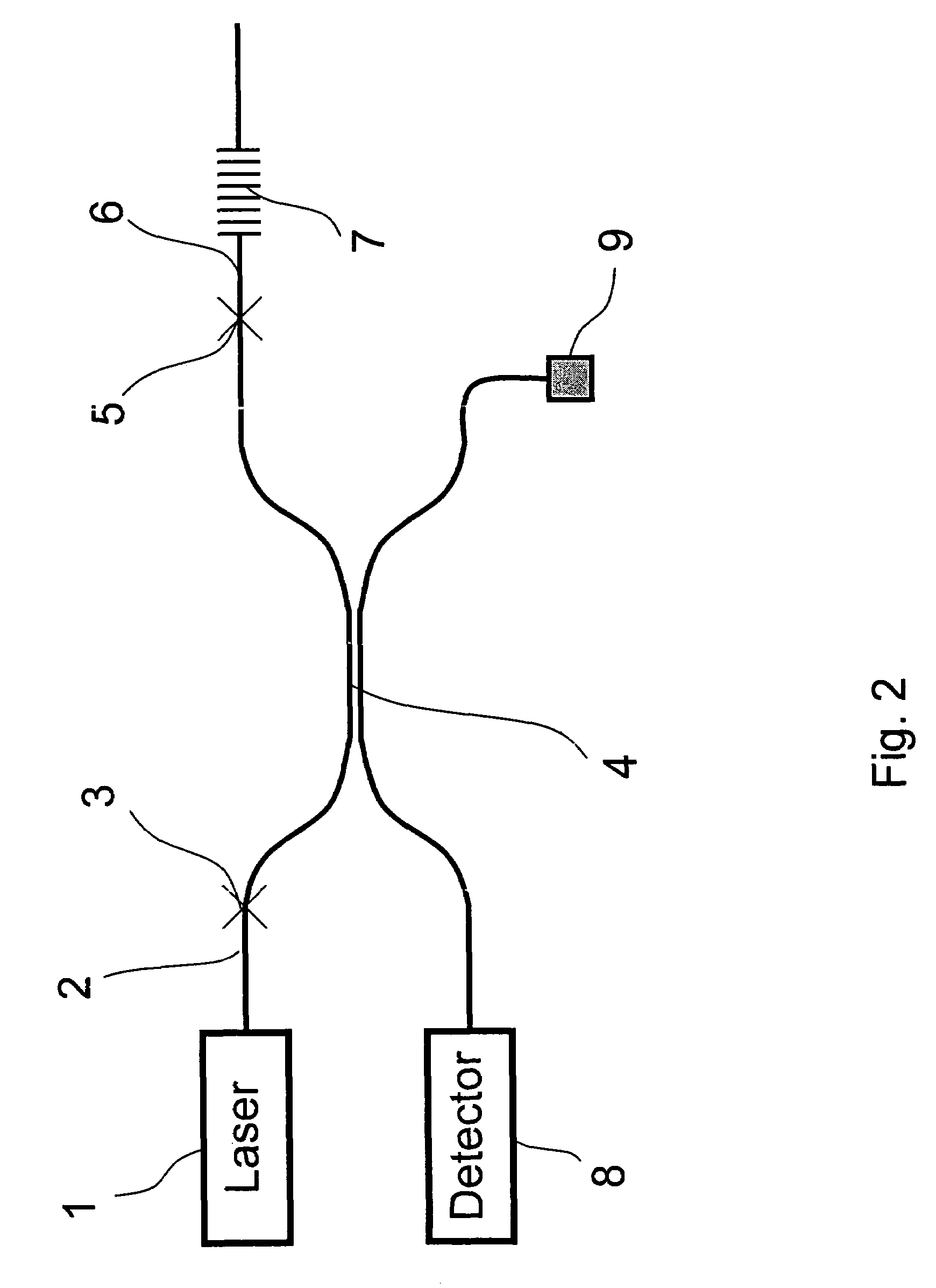Optical fiber sensor based on retro-reflective fiber Bragg gratings
a technology fiber bragg grating, which is applied in the field of optical fiber bragg grating sensor, can solve problems such as obviating problems, and achieve the effect of high glass transition temperatur
- Summary
- Abstract
- Description
- Claims
- Application Information
AI Technical Summary
Benefits of technology
Problems solved by technology
Method used
Image
Examples
Embodiment Construction
[0071]Referring to FIG. 2, light generated by a laser diode or tunable laser 1 is coupled into single mode fiber 2. Light coupled into fiber 2 couples into the input arm of the 50-50 multimode coupler 4 through the single to multimode fiber splice 3. The coupler 4 splits the signal in two with each signal at 50% of the energy. One portion of the beam propagates along the fiber which is terminated with index matching gel 9 and is lost. The other portion propagates to the multimode fibre-sapphire fibre splice 5 and then into the sapphire fibre 6. The light then interacts with the Bragg grating 7 and a portion of the light is resonantly coupled into back reflecting modes by the grating 7. The back reflected modes couple return along the incident path of 6, 5, and 4 to be split again with each reflected signal 50% of the original reflected signal, one portion returning to the laser source 1, the other to the detector 8. In the preferred embodiment the detector is an optical spectrum ana...
PUM
 Login to View More
Login to View More Abstract
Description
Claims
Application Information
 Login to View More
Login to View More - R&D
- Intellectual Property
- Life Sciences
- Materials
- Tech Scout
- Unparalleled Data Quality
- Higher Quality Content
- 60% Fewer Hallucinations
Browse by: Latest US Patents, China's latest patents, Technical Efficacy Thesaurus, Application Domain, Technology Topic, Popular Technical Reports.
© 2025 PatSnap. All rights reserved.Legal|Privacy policy|Modern Slavery Act Transparency Statement|Sitemap|About US| Contact US: help@patsnap.com



